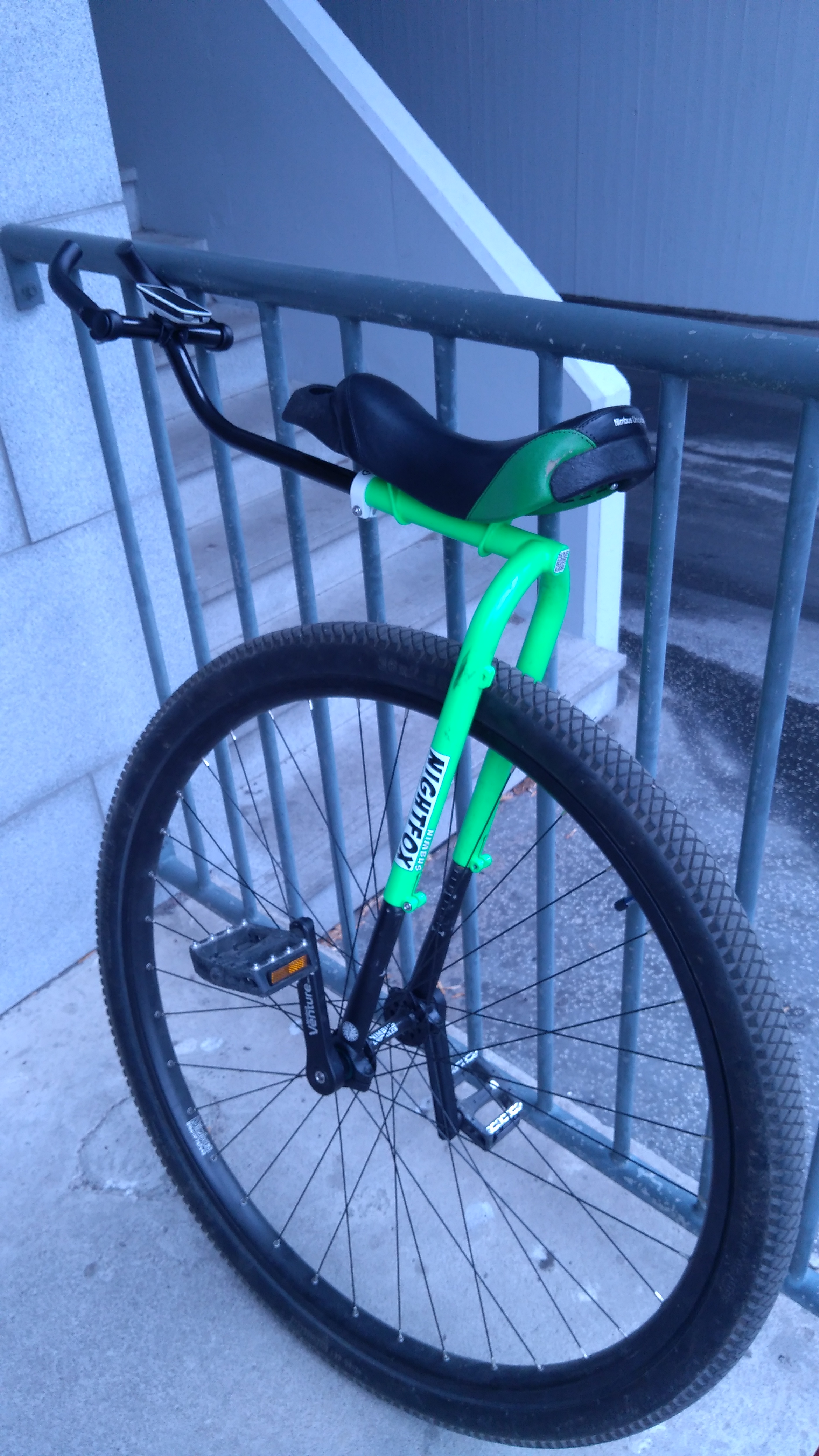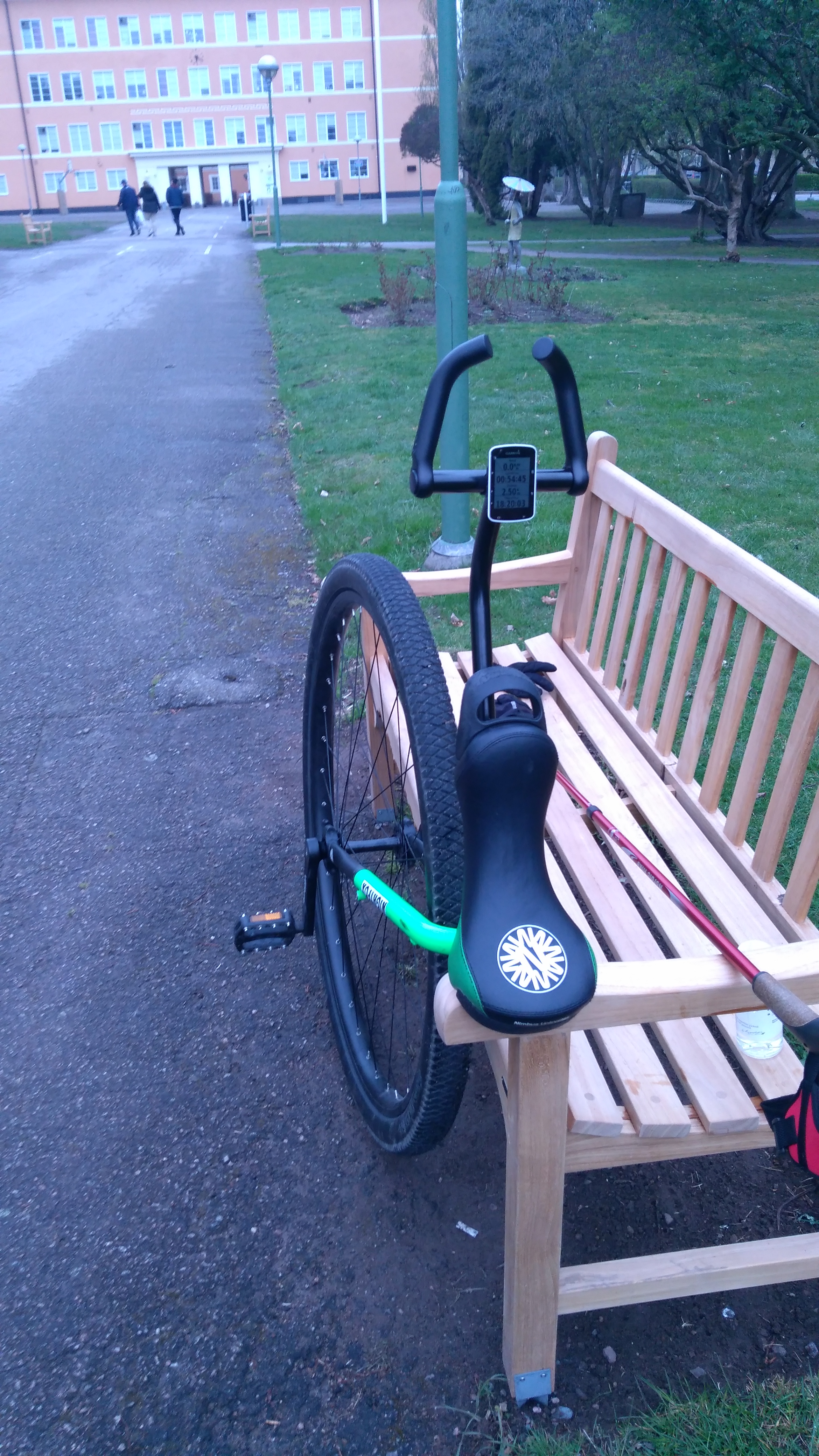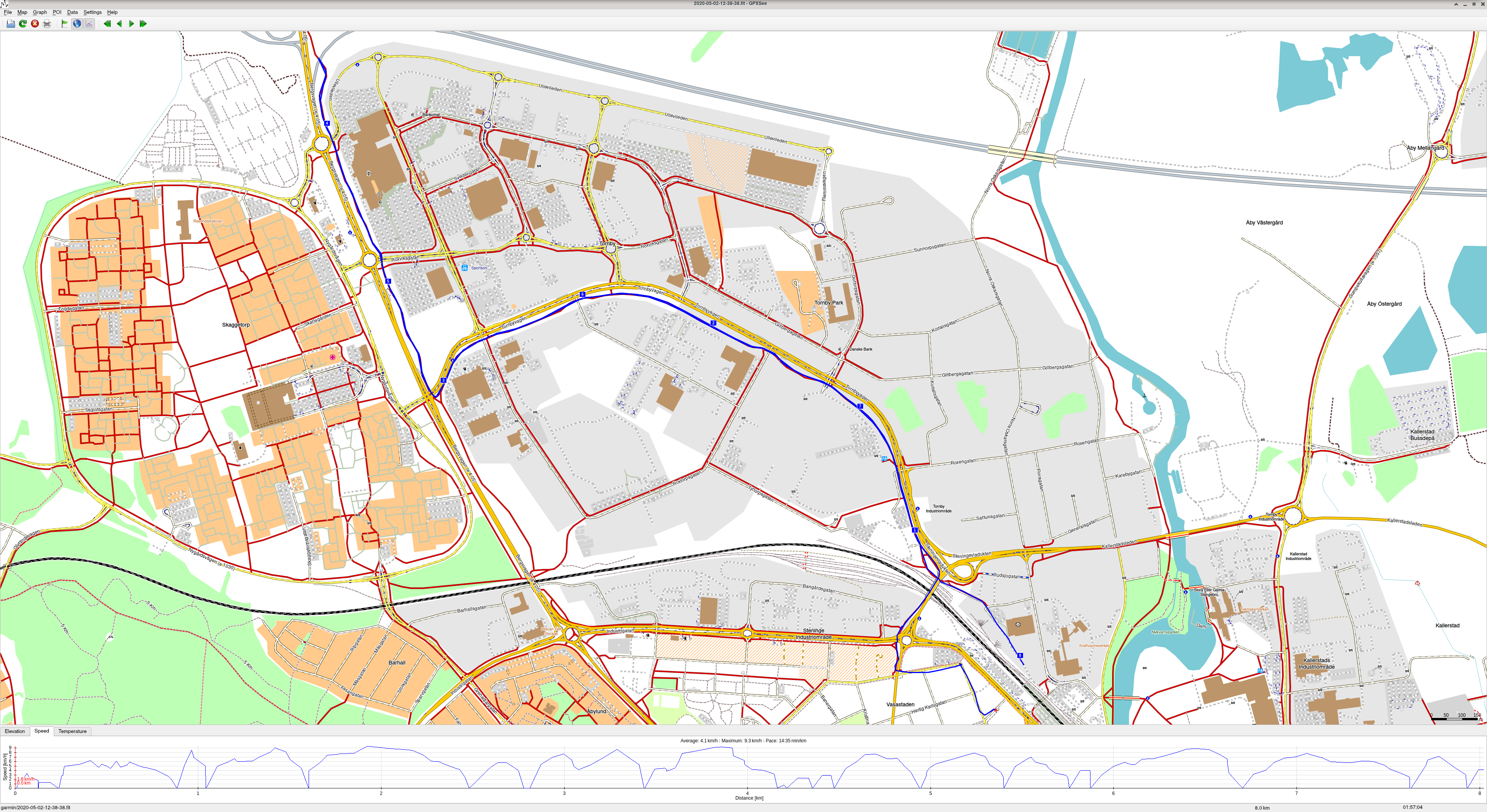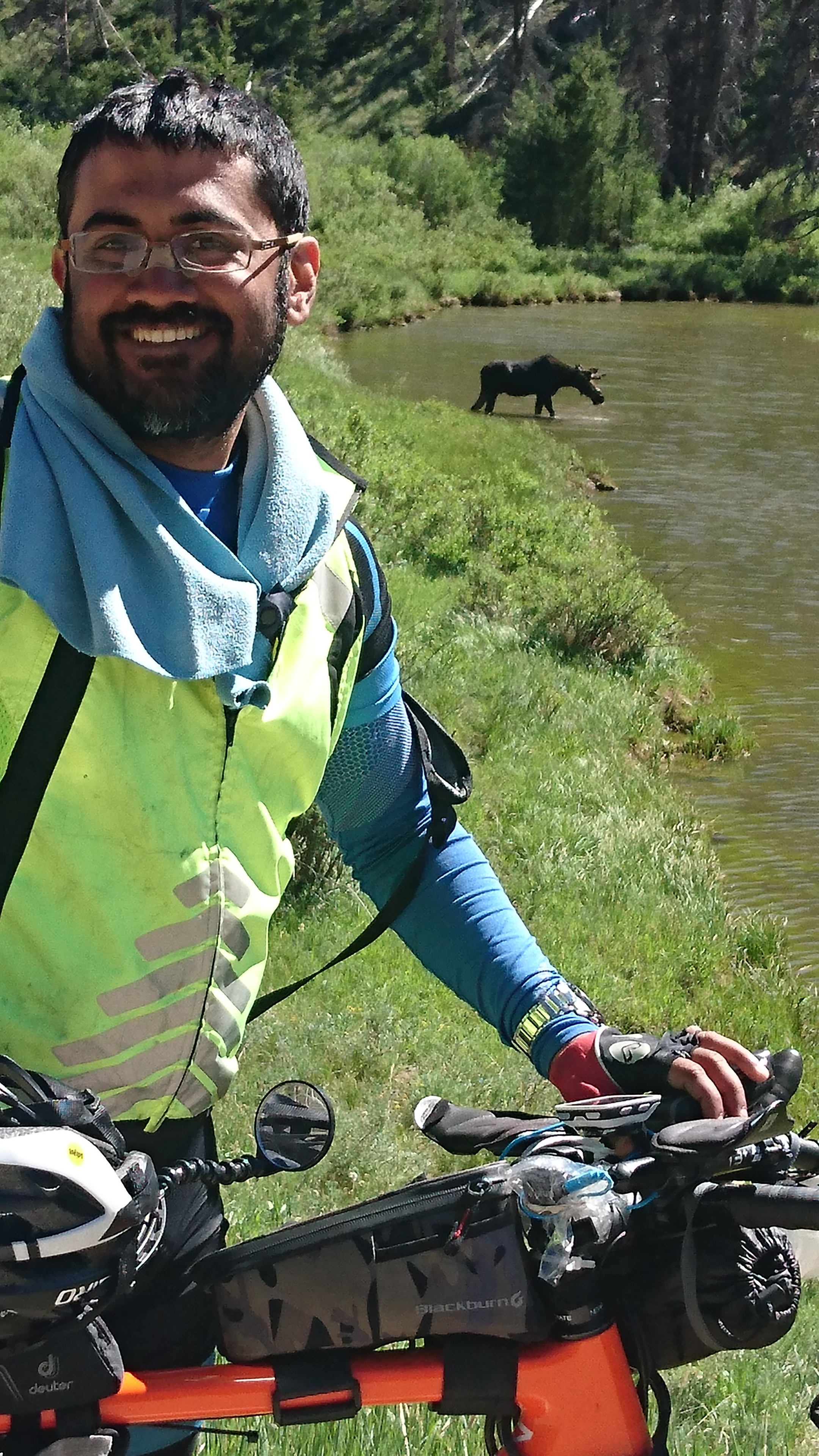Stretching my legs on the 36-er
Yesterday, the weather was perfect for an outdoor ride; 14°C and only a light breeze, so I took the 36-er for a ride. I’m now trying to find bike paths with few or no pedestrians and other cycles so I can gain more confidence riding longer distances, so I’d decided to hit Tornbyvägen and try and ride onto Bergsvägen. Bergsvägen is super nice, with long stretches unbroken by crossings or intersections, and with the exception of the odd fully kitted out bicyclist on a road-bike perhaps doing a high speed ride around Lake Roxen, it has few people on it. Tornbyvägen too has relatively long and straight stretches, interrupted only by a few traffic lights, where the bike path crosses the main streets.
I’d added the bars that came with my 36-er yesterday; while these bars cannot be used for balance, they provide a means to rest the arms.
 These bars took a bit of getting used to, as earlier, I had totally clear view in front of me, but now I had something jutting out from the seat, into my field of vision, and worse, they swayed from left to right, showing me how much I was weaving. After a bit of riding around, I managed to get used to them. The bars meant that I could add my Garmin mount and fix my Garmin bike computer onto it, instead of having to carry it inside my pocket, where I can’t see/interact with it easily.
These bars took a bit of getting used to, as earlier, I had totally clear view in front of me, but now I had something jutting out from the seat, into my field of vision, and worse, they swayed from left to right, showing me how much I was weaving. After a bit of riding around, I managed to get used to them. The bars meant that I could add my Garmin mount and fix my Garmin bike computer onto it, instead of having to carry it inside my pocket, where I can’t see/interact with it easily.

I could see straight away that yesterday’s practice had already started showing results; the bar didn’t sway as much as it did yesterday, meaning I was now tracking a much straighter line, saving a lot of energy in the process. I now was able to make subtle adjustments to my posture, to relieve the stress on my legs, so I could ride longer distances without them hurting. I also found that I could use my new bars as an additional point of reference to gauge the extent of my forward tilt, and lateral sway, and in the days to come, this can be a very good frame of reference too, to gauge progress.
While pedaling anything with pedals, there’s a driver leg that powers the down-stroke, and a rider leg that rides up, and they switch roles every half revolution. When one rides a unicycle, the rider leg doesn’t merely ride up but is responsible for applying back pressure, to help maintain balance.
As I slightly increased my forward tilt ever so slightly, I could feel the center of gravity shift, and with it, the momentum. Tilting forward felt exactly like tilting a quad-rotor drone forward, it picked up forward momentum quickly and without seeming to requiire extra effort; I drove with power with the leg pistoning down, while the other leg merely rode up, barely applying back-pressure, except when I needed to control the speed. When I learned back, the center of gravity shift meant I had to compensate automatically with greater back-pressure on the legs, increasing my work load, while also reducing the speed. The application of back pressure has now been fully absorbed into muscle memory, as I do it automatically, without thinking about it now, but I’m still a bit cautious and perhaps can reduce the back pressure a bit more when tilting forward, to go a bit faster while further reducing work load.
I found that I was now able to ride far longer distances without having to dismount. On three occasions, I rode 400+ meters without getting off, the best being 468 meters. I hope to go past the 500 meters mark soon. When I hit Bergsvägen, I was tempted to ride on to Sattuna, where I could see Lake Roxen from, but suddenly took a little spill just at the end of a climb when my speed was quite low, but I was too tired and couldn’t react fast enough to properly get off. The fall didn’t hurt me at all, but left me a bit surprised. I wasn’t wearing a helmet on this ride, and that’s something I’m definitely going to correct from my next ride. A quick check of the time showed me that it was soon going to be be past my mealtime, so decided to return, and wrapped up my ride without further incident, clocking up 8.22 km on my ride, with my moving average of 6.5 km/h.

